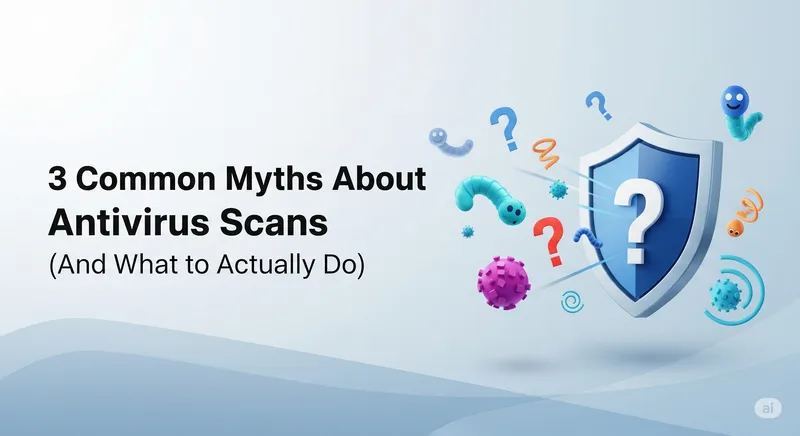3 Common Myths About Antivirus Scans (And What to Actually Do)

Your computer feels a bit sluggish, or maybe you’ve seen a strange pop-up. The first reflex for many is to run a quick antivirus scan. While that’s a good first step, relying on basic scans alone is a bit like only locking your front door but leaving all the windows wide open. The world of malware is more sophisticated than ever, and many common beliefs about computer security are dangerously outdated.
As the go-to team for virus removal in Oceanside and Encinitas, we’ve seen the consequences of these myths firsthand. Let’s debunk three of the most common ones to help you better protect your digital life.
Myth #1: “My built-in antivirus (like Windows Defender) is all I need.”
The Reality: Windows Defender has become remarkably good, offering a solid baseline of protection. For the average user, it’s a huge step up from having no protection at all. However, it’s not invincible. Think of it as a good generalist. It’s designed to catch the most common and widespread threats.
The problem is that cybercriminals are constantly creating new, targeted malware designed specifically to evade detection by common tools like Defender. Advanced threats like zero-day exploits, sophisticated phishing attacks, and fileless malware can sometimes slip through the cracks.
What to Actually Do: Layer your security. While Defender is a great start, consider complementing it with a reputable, on-demand malware scanner like Malwarebytes (the free version is excellent for periodic manual scans). More importantly, practice safe browsing habits: don’t click on suspicious links, be wary of email attachments, and use strong, unique passwords.
Myth #2: “If my scan comes back clean, my computer is 100% safe.”
The Reality: A “clean” scan result is reassuring, but it’s not a guarantee of a clean system. Here’s why:
- Rootkits: Some of the most malicious types of malware, called rootkits, are designed to hide their presence from the operating system and, by extension, from your antivirus software. They can burrow so deep that a standard scan won’t see them.
- Adware & PUPs: Many free antivirus programs don’t flag “Potentially Unwanted Programs” (PUPs) or aggressive adware as a “virus.” But these programs can still slow your computer to a crawl, track your browsing, and bombard you with ads.
- System Corruption: Sometimes, a virus may be removed, but it leaves behind damaged system files, causing instability, crashes, and sluggish performance. The virus is gone, but the damage remains.
What to Actually Do: Look for symptoms, not just scan results. Is your computer still acting strange? Are you seeing pop-ups? Is your browser homepage hijacked? These are all signs of a lingering infection, even after a “clean” scan. If you suspect something is still wrong, it’s time to bring it to a professional. At our shops, we use multiple, specialized tools that run outside of Windows to find and remove even the most deeply embedded threats.
Myth #3: “I have to pay for the best antivirus software.”
The Reality: This was true a decade ago, but the landscape has changed. As mentioned, the free protection offered by Windows Defender combined with the free version of Malwarebytes provides an excellent security posture for most home users. Paid suites often bundle in extra features like a VPN, password manager, or cloud backup. While these can be useful, they aren’t strictly necessary for core virus protection.
The biggest difference isn’t free vs. paid; it’s proactive prevention vs. reactive scanning.
What to Actually Do: Focus on the “human firewall.” The number one vector for infection is you, the user. Here is a quick checklist:
| Action | Why It’s Important |
|---|---|
| Enable a Firewall | Blocks unauthorized network connections. |
| Keep Software Updated | Patches security holes that malware exploits. |
| Use an Ad-Blocker | Blocks malicious ads (“malvertising”). |
| Be Skeptical of Emails | The top delivery method for ransomware and spyware. |
If you’re ever in doubt, or if your PC is already compromised, don’t hesitate to seek expert help. A professional virus removal service in Oceanside or Encinitas like ours can ensure your system is truly clean and your data is secure.